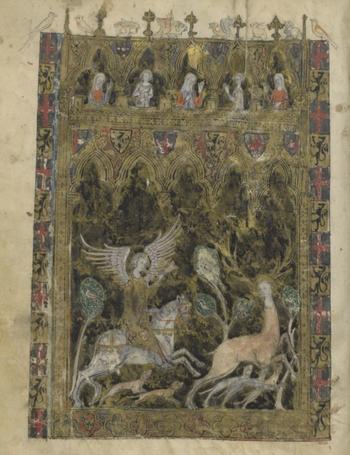Subproject 01
ich bin niht niuwe –? Innovation/Novelty as Paradoxical Effect in the Medieval and Early Modern Discourse of Courtly Love
Prof. Dr. Susanne Köbele (German Seminar, Universität Zürich)
Based on paradigmatic sequences of texts from the 13th to the 16th centuries, the subproject aims to move towards a historically sensitive poetics and pragmatics of innovation/novelty in medieval and Early Modern love poetry. At the heart of this genuinely lyrical poetics of the ,new‘ lies thequestion of how ,old‘ formal, generic and discursive traditions become intertwined in ,novel‘ re-combinations embedded in dense networks of intertextuality. By closely combining the analysis of textual traditions with arguments based on pragmatics, poetological considerations and text theory, the concept of ,retextualisation‘ – a well-established approach as far as the medieval epic is concerned – will be transferred to and modified in accordance with the specific performative, poetological and media-related demands and conditions of lyrical poetry.
Research in the first funding period has validated the project’s key thesis: when it comes to examining the ambivalent dynamics of old and new involved in poetic processes of transformation, it is not, for the most part, the texts that engage in the implicit (allusive, metaphorical, ironic, medial-performative) and/or explicit (argumentative, self-reflexive) discursivisation of ,old‘ and ,new‘ in symmetrical or synchronic form that are of particular systematic and historical significance, but rather those that exhibit temporal and axiological counter-movements.
Another hypothesis borne out in the course of the first funding period is that the negotiation of the tension between heterogenous and heterochronic claims of innovation is especially complex in the case of courtly love, a theme highly integrative in terms of semantics and epistemology. A matter of contention both on the object level and on the meta-level, the competing implications of ,old‘ and ,new‘ multiply and intermingle, producing a variety of interferences: discursive (secular-spiritual, classical-courtly-Christian), generic (especially Minnesang, Minnerede), media-related (oral vs. literary; manuscript vs. printed text; text vs. image) and linguistic (vernacular vs. Latin).
Two complementary synchronic incisions render the unwieldy wealth of material manageable: one trajectory examines late medieval hyperbolic discourses (Überkunstwerke: Hyperbole, Meta-art, Discursive Transgression); the other, starting from Hadamar von Laber's influential allegorical love chase (Jagd), deals with the adaptation of the prestigious form of the Titurel-verse in the 14th and 15th centuries.
The continuation of the strophic tradition in the late medieval Minnereden is the field of work predestined to be used to explore the ambivalent interaction of the old and the new in medieval literature as a whole. On the one hand, the explicit quotation of the form establishes clear references to the epic Titurel-tradition. On the other hand, the reduction of the form's content to the (allegorically and dialogically negotiated) subject of love reapproaches a lyrical context (Minnesang).
In addition, a paradoxical logic can be observed regarding the allusions: Hadamar’s intertextual references to the old epic contents of the Titurel-narrative become ambiguous and may at the same time allude to new bodies of knowledge and discourses. Moreover, this lusoric quality unfolds comic and ironic potential, to which our sub-project also wants to pay attention – with regard to not only Hadamar himself but also for the later texts that follow his example.
Thus, due to the many common areas of interest, the work of the project leader and the research assistant is closely linked. Furthermore, the common interests result in numerous synergies and a productive exchange with other sub-projects of the research group. For example, sub-project 1 and sub-project 2 share a common interest in various forms of ironic nostalgic self-monumentalisation of texts that seem to be accompanied, supported or even initiated by the mixture of genres.
